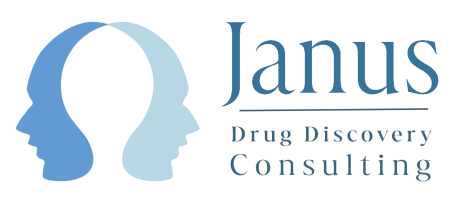Covalent drugs may do more than meets the eye. Could they be molecular hand grenades or absolutely fine in moderation?
15th December 2023

There are many successful covalent drugs on the market though covalency is still a topic which seems to make some drug developers nervous due to the potential for unexpected, idiosyncratic events. The manuscript in BioRXiv from the Keriann Backus-led team at UCLA from November 2023 suggests some wide-reaching consequences for use of covalent drugs which has caused some discussion in the field and so is worthy of a second look to highlight some potentially important caveats.
Nature abhors a vacuum is an important observation first postulated by Aristotle. He may have gone on to say that Nature also abhors electrophiles, or to be more specific, highly reactive electrophiles. The cell is essentially a soup of nucleophiles (every protein, sugar & nucleic acid-containing molecule will contain numerous OH, NH2, bases, acids etc) so electrophiles have the potential to react with almost anything in the cell. It’s therefore no surprise that there are very few common electrophiles in nature and any that are used tend to be weakly electrophilic (eg Acetyl CoA) and carefully controlled via enzymes. On the other hand, the cell has evolved mechanisms, including glutathione and others, for removing or detoxifying unwanted electrophilic species which may appear from aberrant metabolism, oxidative stress or the presence of other toxins.
Evolution has created a clear narrative: electrophiles in cells should be treated with extreme caution and, if in doubt, they should be removed or they will react with a lot of nucleophiles and unintended (ie bad) things will likely happen as a result.
Against this context, the recent preprint from the Backus group at UCLA (Pervasive aggregation and depletion of host and viral proteins in response to cysteine-reactive electrophilic compounds (link here) shows what can happen when you let strong electrophiles loose on a set of cells.
With the initial aim of finding electrophilic fragments which could act as molecular glues or other TPD agents to deplete SARS Cov2 proteins, the team identified a range of sulfonyl fluorides and haloacetamides which indeed did deplete these targets including a specific target nsp14 which showed good depletion and some SAR.
The key tool compound, JC19, a sulfonyl fluoride-chloroacetamide double electrophile did indeed show nsp14 depletion (though admittedly with a relatively weak DC50 of ~10uM) prompting a range of mechanistic studies using this and related agents which threw up a range of complex observations: the degradation was linked to increases in ubiquitylation which was not fully reversed by proteasome inhibition, autophagy inhibition or E3 ligase knockdown. Although the unfolded protein response (UPR) or KEAP1/NRF2 pathway did not appear to be activated, apparent increases in proteasome function were also seen giving, in total, a complex web of effects. Additional studies showed the potential for induction of protein aggregation as well as formation of stress granules.
These effects were also seen with other electrophilic agents, including, more relevantly for drug discovery, the clinically-useful covalent EGFR inhibitor afatinib (though the authors note, only when used well above the concentrations needed for full target engagement).
Taken at face value, this paints a worrying picture: reactive covalent agents, including a drug in current clinical use, initiate a complex cascade of cellular effects which may underpin or complicate their biological activity leading to potential for non-selective effects or indeed undesired, off-target pharmacology.
But wait, most of these studies used covalent compound concentrations in the range 10-100uM – a drug exposure significantly above that likely to ever be achieved in vivo or in the clinic. Indeed when afatinib was used at 100nM, much closer to its physiological potency required for EGFR blockade, the undesired effects were not seen. Ibrutinib, the highly clinically-successful lymphoma-treating BTK inhibitor similarly showed no effects, even when used at 10uM, well above its pharmacologically active level required for full target engagement.
The dose makes the poison reputedly said Paracelsus and that is worth remembering here also. Many compounds, when used at 10-100uM will do a lot of things – this is especially true of covalent agents but, if the molecules show desired pharmacological effects at low concentrations (say <100nM), then a significant therapeutic window will likely exist – indeed in vivo systems may never be exposed to free drug levels anywhere close to 10-100uM.
Can highly reactive covalent drugs do unwanted things in cells? Yes, they certainly can and that is why you typically don’t see lots of sulfonyl fluorides or chloroacetamides in drugs in clinical usage, but they mainly do these things at high concentrations – often at the ubiquitous default test concentration of 10uM beloved of cell biology or chemical biology manuscripts.
A wise medicinal chemist once said that any compound-induced cellular effects weaker than 1uM should be treated with caution (and effects >10uM with extreme caution). It’s not that they may not be real or even useful but there’s an increasing chance that they may be artefactual or driven by off-target effects or pleiotropic mechanisms which are unlikely to translate to desired in vivo efficacy with good tolerability.
For pharmacology you can trust more reliably, compounds which work with cellular EC50 values <~100nM are always preferred. It’s not to say undesired or complex things can’t happen at these lower concentrations, but the chance of this is much lower.
Covalency is making somewhat of a renaissance in many areas of drug discovery, including TPD as covalency brings with it great power but, as with so many things, great power comes with great responsibility – choose the level of reactivity carefully and you can identify drugs which engage their desired biological mechanisms at low nM concentrations and show good therapeutic windows and clinical safety. Be very cautious using highly chemically reactive covalent agents which require micromolar levels to show effects in cells as you may trigger some of the effects noted in the Backus manuscript, presumably along with others. Yes, covalent drugs can also do unexpected things, leading to concerns around potential idiosyncratic effects but if you are able to use agents with moderate to low reactivity which can function from low drug exposures, your chances of encountering the unexpected issues are greatly reduced. As dieticians will also tell you, most things are fine in moderation.
We need your consent to load the translations
We use a third-party service to translate the website content that may collect data about your activity. Please review the details in the privacy policy and accept the service to view the translations.

